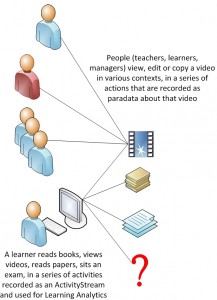Link: What is schema.org(PDF)
Schema.org is a joint initiative of the search engines Google, Bing, Yahoo and Yandex aimed at making it easier to index web pages in such a way that facilitates the building of sophisticated search services. Schema.org metadata may also be used for other applications e.g. in eBooks and as stand-alone metadata records.
This briefing describes schema.org for a technical audience. It is aimed at people who may want to implement schema.org markup in websites or other tools they build but who wish to know more about the technical approach behind schema.org and how to implement it. We also hope that this briefing will be useful to those who are evaluating whether to implement schema.org to meet the requirements of their own organization.
This briefing has been produced as part of the Learning Resource Metadata Initiative (LRMI), which is concerned with extending and applying schema.org to the description of educationally relevant properties of resources. Other briefings in this series will provide an in-depth overview of LRMI.
[If you wish to take advantage of the CC-By licence and edit your version, there is a copy on Google docs that you may clone, or you may download a zip archive of the files used to create the PDF in Scribus, this archive includes the plain text and the images.]

